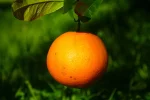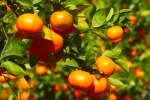shefollowsshells
Veteran Member
- Time of past OR future Camino
- Several alone and with children
After just watching a video John found for me here it mentions exactly what I thought the whole time I was in Portugal.
So many beautiful orange trees but difficult to be served a fresh glass of orange juice, or even a carton of regular (more natural tasting) orange juice.
I found when places included breakfast the orange juice was very fake, "Tang" like in taste...
Wondered why, even in wonderful establishments it seemed to be difficult to get a orange juice that tasted more natural.
So many beautiful orange trees but difficult to be served a fresh glass of orange juice, or even a carton of regular (more natural tasting) orange juice.
I found when places included breakfast the orange juice was very fake, "Tang" like in taste...
Wondered why, even in wonderful establishments it seemed to be difficult to get a orange juice that tasted more natural.






















